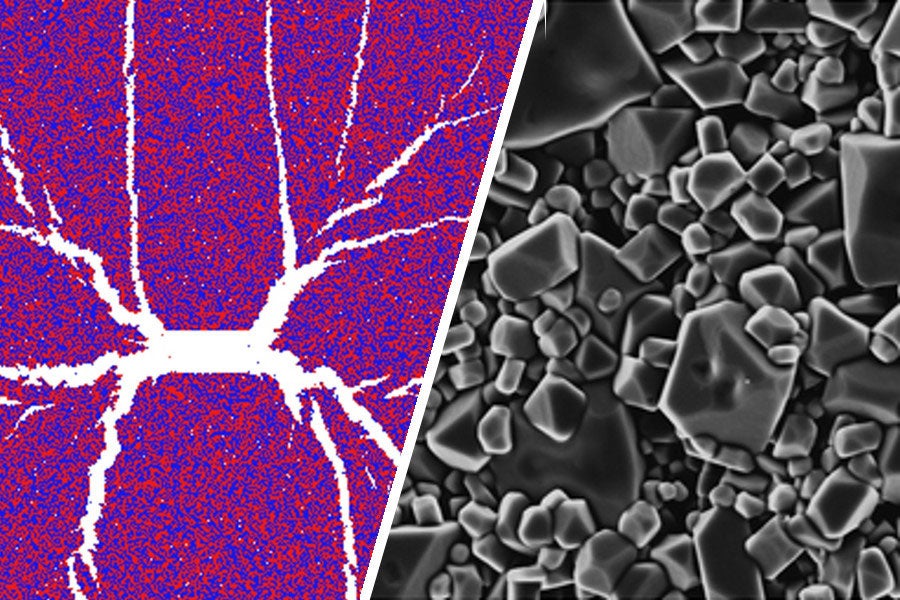
Glassy materials are ubiquitous in electronic, structural and chemical technologies for their optical properties, hardness and chemical inertness, yet fundamental relations between structure, environmental effects and these properties remain unknown. Glass research at Rensselaer combines specialized synthesis conditions, characterization techniques and computation to elucidate atomic-scale structure-property relations, the effect of high pressure and surface stresses, and new glass compositions including mixed-alkali, non-oxide and metallic glasses.
Strengthening glass remains a high priority for all its applications, and researchers at Rensselaer are investigating novel strategies towards this goal. Nanostructured glass exhibits mechanical behavior fundamentally different from traditional bulk glass. Compressive stress in surface layers strengthens glass, and may be introduced by surface stress relaxation under tension, in addition to traditional tempering and ion-exchange techniques. Research underway also seeks to explain anomalous properties of glasses such as static fatigue limits, strength degradation of ion-exchange strengthened glasses and low viscosity of mixed-alkali glasses.
Another major thrust at Rensselaer is the study of glasses under high pressure using unique experimental facilities for generating high pressures, with in situ structural characterization using Raman and Brillouin scattering. Along with molecular dynamics simulations with new interaction potentials, these studies elucidate the impact of mixed network formers, effect of pressure on deformation and connections between temperature-dependent viscoelastic properties. Research currently underway also explores other glassy materials such as metallic glasses, and glasses for novel applications such as capacitive energy storage with glass dielectrics.
Please click here for a video overview of glass science at Rensselaer.
